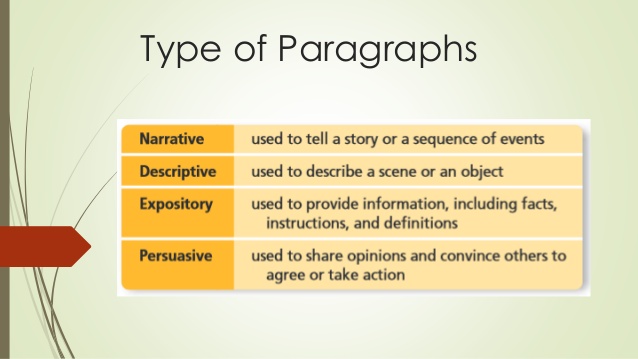Back to: BUSINESS STUDIES JSS2
Welcome to Class !!
We are eager to have you join us !!
In today’s Business Studies class, We will be discussing Paragraphing. We hope you enjoy the class!

Paragraphing
Paragraphing is the practice of dividing a text into paragraphs. The purpose of paragraphing is to signal shifts in thinking and give readers a rest.
Paragraphing is “a way of making visible to the reader the stages in the writer’s thinking” (j. Ostrom, 1978). Although conventions about the length of paragraphs vary from one form of writing to another, most style guides recommend adapting paragraph length to your medium, subject, and audience. Ultimately, Paragraphing should be determined by the rhetorical situation.
Examples and observations
“paragraphing is not such a difficult skill, but it is an important one. Dividing up your writing into paragraphs shows that you are organized, and makes an essay easier to read. When we read an essay we want to see how the argument is progressing from one point to the next.
“unlike this book, and unlike reports, essays don’t use headings. This makes them look less reader-friendly, so it is important to use paragraphs regularly, to break up the mass of words and to signal the making of a new point. . . . An unparagraphed page gives the reader the feeling of hacking away through a thick jungle without a track in sight—not very enjoyable and very hard work. A neat series of paragraphs act like stepping stones that can be followed pleasurably across the river.”
(Stephen McLaren, “essay writing made easy”, 2nd ed. Pascal Press, 2001)
Paragraphing basics
“The following principles should guide the way paragraphs are written for undergraduate assignments:
- Every paragraph should contain a single developed idea…
- The key idea of the paragraph should be stated in the opening sentence of the paragraph…
- Use a variety of methods to develop your topic sentences…
- Finally, use connectives between and within paragraphs to unify your writing…” (Lisa emersion, “writing guidelines for social science students,” 2nd ed. Thomson/Dunmore Press, 2005)
Types of Paragraph
It’s a good idea to consider just these four.
The descriptive paragraph: this type of paragraph describes something and shows the reader what a thing or a person is like. The words chosen in the description often appeal to the five senses of touch, smell, sight, sound, and taste. Descriptive paragraphs can be artistic and may deviate from grammatical norms.
The narrative paragraph: this type of paragraph tells a story. There’s a sequence of action or there’s a clear beginning, middle, and end to the paragraph.
The expository paragraph: this type of paragraph explains something or provides instruction. It could also describe a process and move the reader step by step through a method. This type of paragraph often requires research, but it’s possible that the writer is able to rely on his or her own knowledge and expertise.
The persuasive paragraph: this type of paragraph tries to get the reader to accept a particular point of view or understand the writer’s position. This is the type of paragraph that many teachers focus on because it’s useful when building an argument. It often requires the collection of facts and research
Paragraph structure
Most paragraphs in an essay have a three-part structure—introduction, body, and conclusion. You can see this structure in paragraphs whether they are narrating, describing, comparing, contrasting, or analysing information. Each part of the paragraph plays an important role in communicating your meaning to your reader.
Introduction: the first section of a paragraph; should include the topic sentence and any other sentences at the beginning of the paragraph that gives background information or provides a transition.
Body: follows the introduction; discusses the controlling idea, using facts, arguments, analysis, examples, and other information.
Conclusion: the final section; summarizes the connections between the information discussed in the body of the paragraph and the paragraph’s controlling idea.
We have come to the end of this class. We do hope you enjoyed the class?
Should you have any further question, feel free to ask in the comment section below and trust us to respond as soon as possible.
In our next class, we will be talking about Page Setting. We are very much eager to meet you there.


Thanks